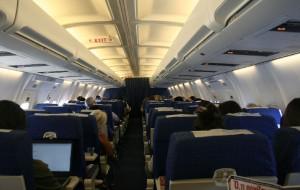 From the Wright brothers’ wild rides over the fields of North Carolina to the current ultra-modern aircraft, the idea of flying has always captured the hearts and imaginations of people around the world. Today, you might take for granted that you are able to travel safely by air, but in the industry’s infancy, safety was not regulated by laws, and operating or maintaining planes was a far looser discipline than it’s since become.
From the Wright brothers’ wild rides over the fields of North Carolina to the current ultra-modern aircraft, the idea of flying has always captured the hearts and imaginations of people around the world. Today, you might take for granted that you are able to travel safely by air, but in the industry’s infancy, safety was not regulated by laws, and operating or maintaining planes was a far looser discipline than it’s since become.
Although commercial flight has existed since 1913, the industry was unregulated and because of safety concerns, very few outside the military would venture onto a plane. The Air Commerce Act of 1926 changed the way companies could operate by introducing federal safety regulations and the enforcement of these standards. Companies started to implement stricter and more comprehensive training programs, and the planes themselves received safety upgrades. These changes have resulted in a decline in air travel accidents over the years, so much so that in terms of deaths per distance-traveled, it is now actually safer to travel by air than by car…sixty-five times safer, according to the University of Michigan. In fact, Michael Sivak, head of UMTRI’s Human Factors Division, says that “For […] flying to become as risky as driving, disastrous airline incidents on the scale of those of Sept. 11 would have to occur about once a month.” To compare the safety of airline travel to other means of transportation,
In fact, by 1999, the total number of aircraft accidents was just over 200, according to the independent Geneva-based Aircraft Crashes Record Office. While this might sound like a lot, that marks a significant improvement over the statistics from the mid-1940s, where the accident toll was 500 or higher. Since the turning of the year 2000, the world has yet to see another year with an accident toll in excess of 200, and 2011 – with only 95 accidents reported as we enter the final month of the year – is on track to become the safest year for air travel yet.
Nearly a decade after the Air Commerce Act was passed, the Air Traffic Control, or ATC, was formed by the airlines. The ATC was, and still is, responsible for organizing air traffic and preventing collisions of aircraft. Its employees are highly-trained workers, adept at handling the high-stress environment of air travel safety. The pilots of individual airlines are also required to obtain extensive training in both flight simulators and real aircraft, and they may even hold a degree in avionics, which gives them even greater insight into the craft that they pilot. In fact, many commercial airlines insist their captains have at least a four-year degree. The explosive growth of the airline industry has made it necessary to have skilled employees directing the paths of aircraft. With so many planes in service today, a small army of these employees is charged with keeping each plane, whether in flight or on the tarmac, on its proper course.
Today, people can travel the world safely, largely because of the foresight of airline operators and federal regulators. The safety laws and the requirements for air traffic controllers, operators and pilots to have extensive training serve to keep commercial airline passengers safely and happily flying the skies.
Author: Philip J Reed
Philip J Reed works in association with Redstone College in Denver, Colorado. Redstone offers courses in avionics and other aircraft related career paths. If you have any questions or comments, please feel free to post them below or contact Redstone directly through their website.

